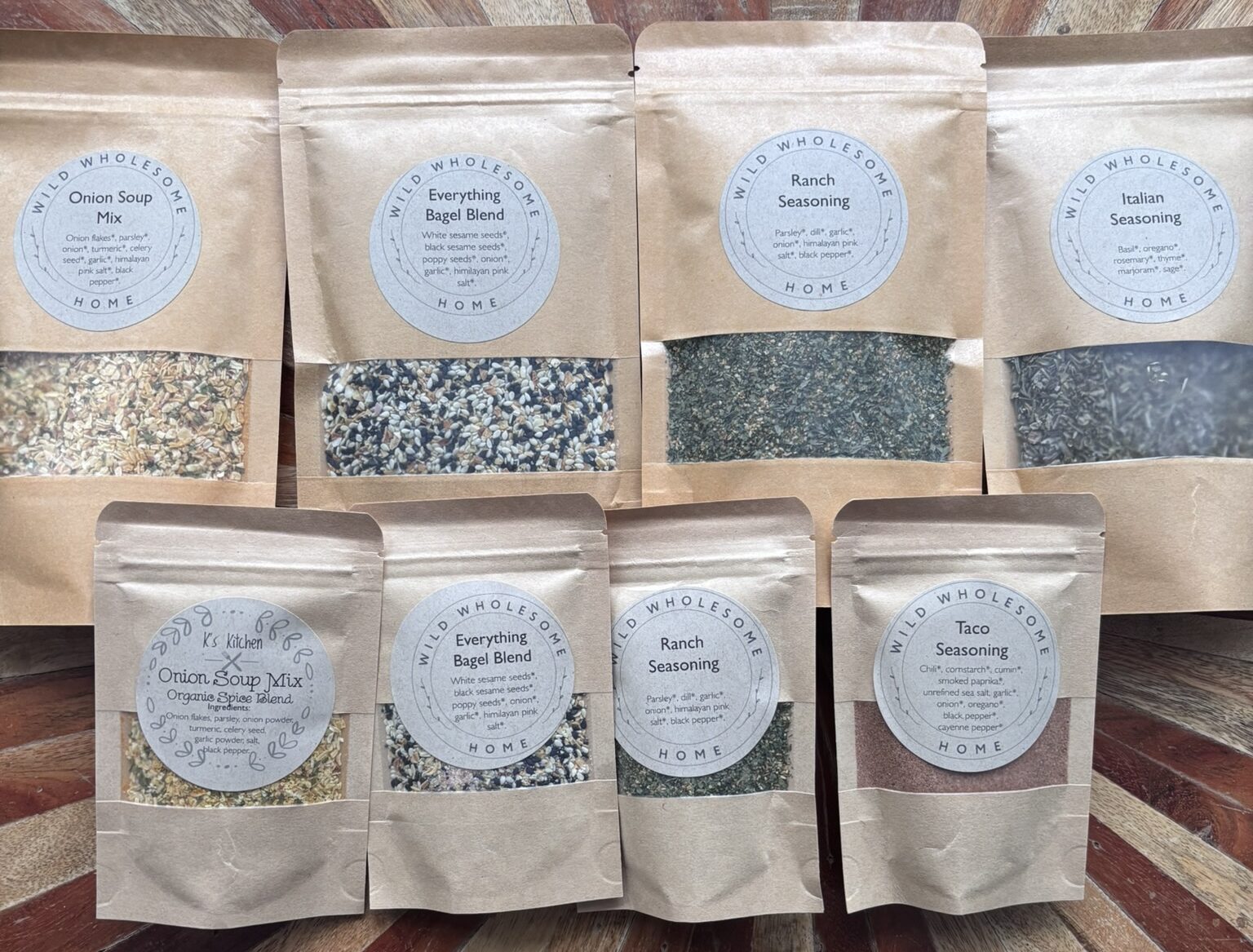Spice blends and sauces like onion soup mix, seasoning salt, all-purpose seasoning, ranch, teriyaki, honey garlic and more have become so common in recipes, it would be easy to use them every time you step into the kitchen. What you may not realize is how affordable and easy they are to make yourself! For under $1 per serving, you can enjoy a meal free from excess salt and sugar, preservatives, and unnecessary ingredients.
If you’ve ever tried to watch your sodium or sugar intake, you may have found that most pre-packaged seasonings, dressings and sauces contain both of these ingredients and usually in fairly substantial amounts. While they can be beneficial when it comes to adding and enhancing flavors, the amounts can be excessive in some of these products.

Have you ever compared the ingredient list from your store-bought seasoning to the recipe for a homemade version? Here are a couple examples if you haven’t.
Taco Seasoning
Commercial: Spices (contains chili pepper), maltodextrin, salt, onion powder, corn starch, sea salt, high monounsaturated vegetable oil (canola, soybean and/or sunflower), natural flavor, citric acid, sugar, silicon dioxide, garlic extract.
Homemade: Chili powder, corn starch, cumin, smoked paprika, Himalayan pink salt, garlic powder, onion powder, oregano, black pepper, cayenne pepper.
Teriyaki Sauce
Commercial: Water, sugar, modified corn starch, vinegar, salt, teriyaki flavor, caramel, dehydrated garlic, hydrolyzed soy protein, onion powder, corn syrup, dehydrated red bell pepper, mushroom powder, autolyzed yeast extract, citric acid, spices.
Homemade: Water, soy sauce (water, soybeans, wheat, salt, brewing starter), brown sugar, honey, fresh ginger, fresh garlic.
After reading those lists you may be asking yourself why the commercial versions have so many more ingredients that the homemade versions. That’s what I did.
Why does the commercial taco seasoning have salt listed twice?
(salt, sea salt)
Why does the commercial teriyaki sauce have 2 types of sugar listed?
(sugar, corn syrup)
And most importantly…What purposes are all of those extra ingredients serving?

Maltodextrin: a highly-processed powder made from corn, rice, potato starch, or wheat and used as a flavour enhancer. Although it is not a sugar, it behaves in a very similar way (increasing blood sugar levels) and is often used as a sugar substitute.
Silicon dioxide: commonly added to foods and cosmetics to prevent clumping and binding together – an anti-caking agent. It is generally considered to be safe when used in small amounts.
But is a small amount in a large portion of the foods we are consuming still considered safe?
Hydrolyzed soy protein: created by a chemical process to break down proteins into amino acids. This is used to enhance flavours in our food. When hydrolyzed proteins are mixed with salt, they form MSG (monosodium glutamate).
Autolyzed yeast extract: created by the chemical breakdown of yeast. It is also used as a flavor enhancer in foods and also can form MSG when mixed with salt.
So why are hydrolyzed soy protein AND autolyzed yeast extract necessary in the same product?
While these ingredients seem to serve a purpose, are they needed? I have been making my own seasonings and sauces without these ‘extra’ ingredients and have had no issues with clumping or lack of flavor.
From-scratch sauces and spice blends also give you full control over the sourcing of the ingredients. Sourcing organic, local, responsibily farmed ingredients gives you the opportunity to limit toxins, support local, and even grow your own! Checking labels on ingredients like soy sauce can make a big difference in the finished product due to the wide variations found between different brands.
Organic Matters is my go-to for affordable, organic ingredients.
Ready to start a shift in your spice cupboard?
Here are some of my favorites!

Not ready to make your own?
Check out the SHOP page for details on how to purchase organic spice blends from Wild Wholesome Home.


